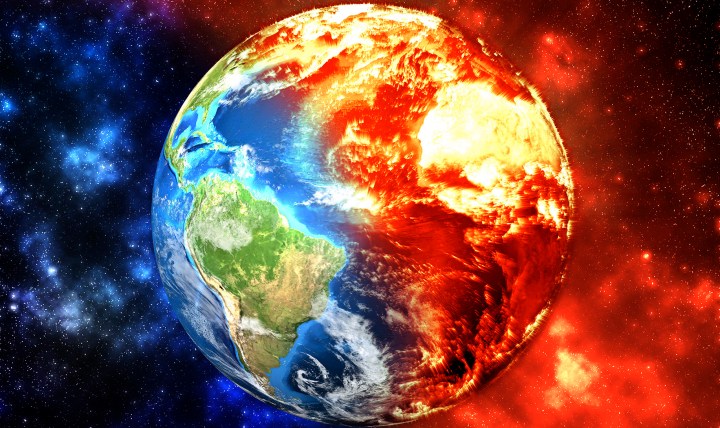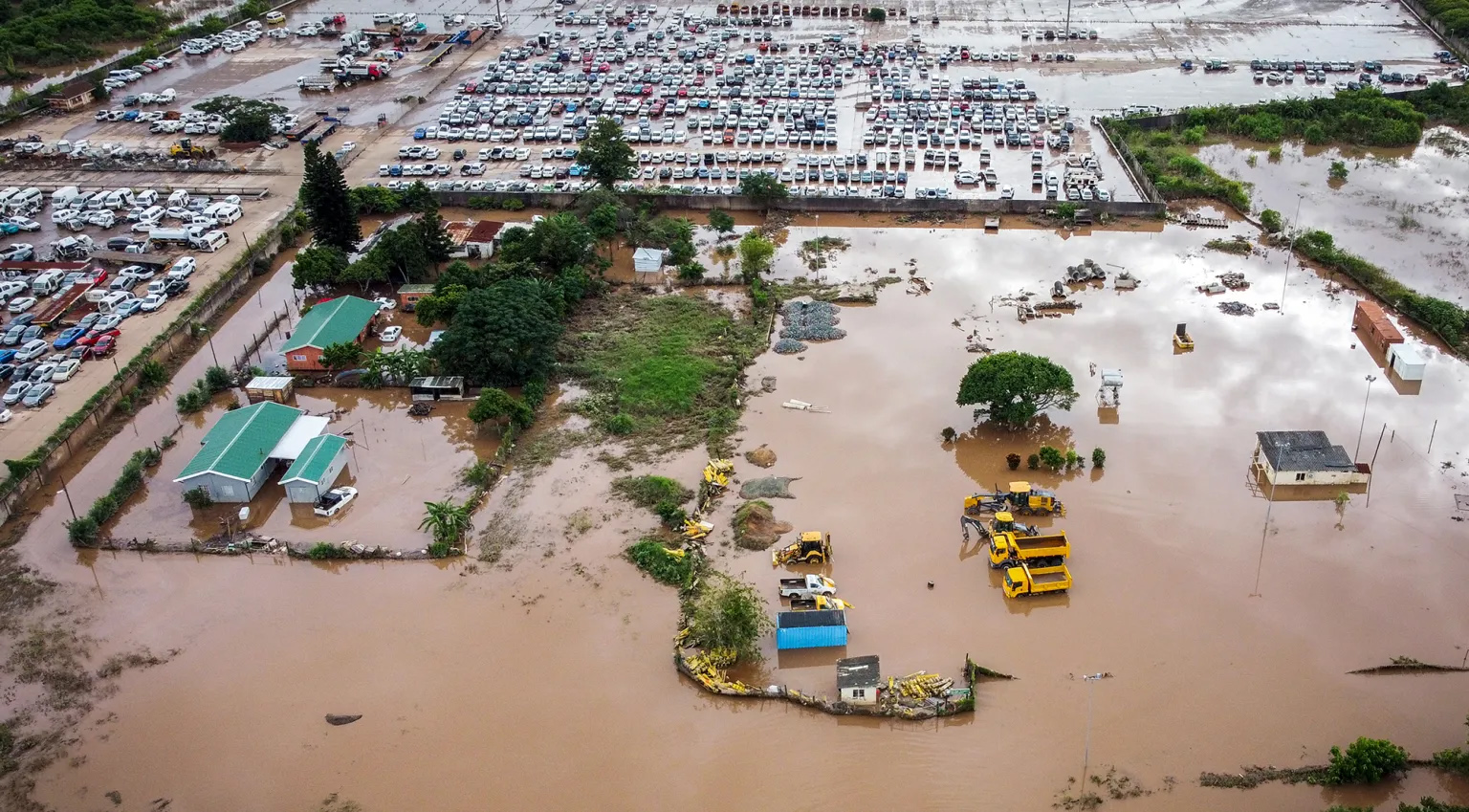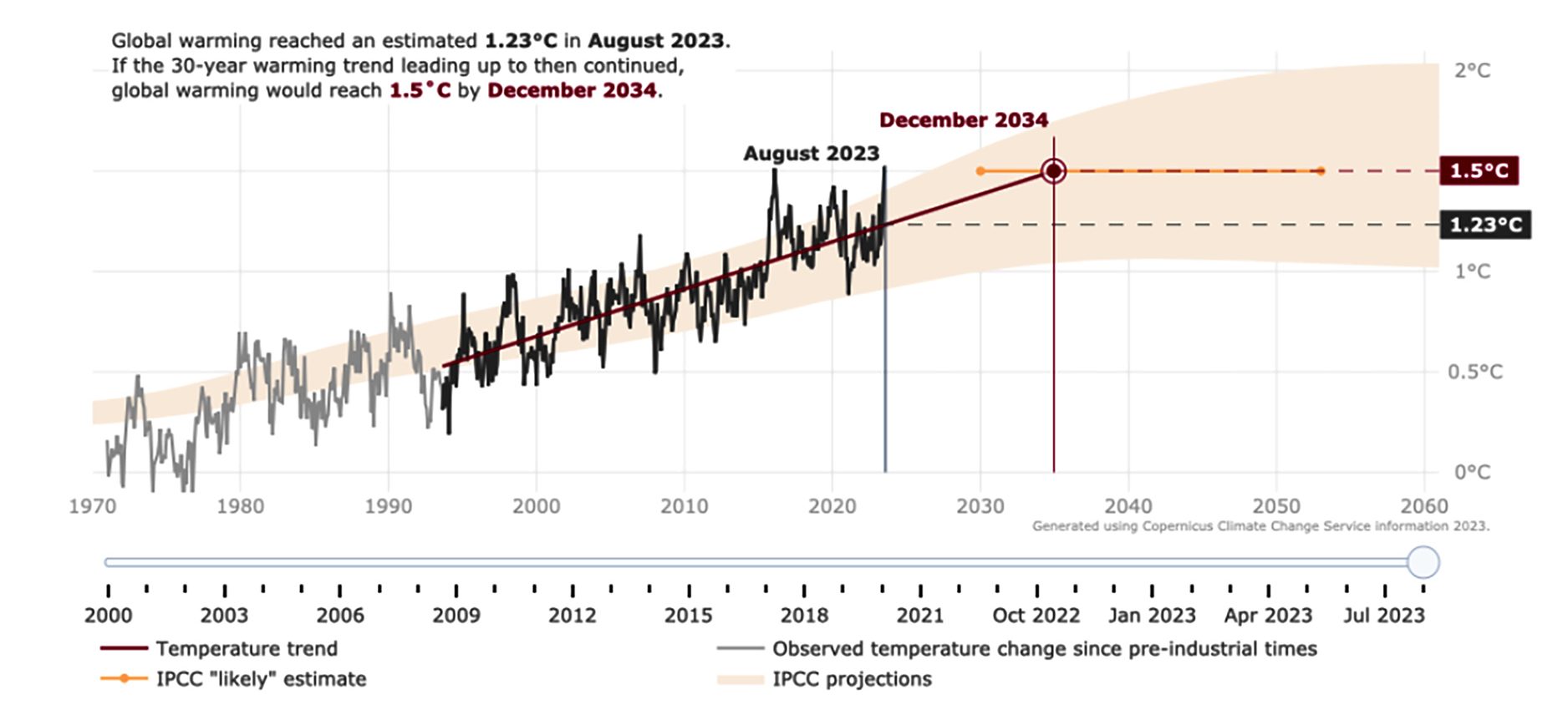CLIMATE CRISIS
Earth could exceed 1.5°C ‘dangerous climate change’ threshold by December 2034 – WHO

According to a new tool developed by the Copernicus Climate Change Service, if the global warming trend of the past 30 years continues, the world could exceed the 1.5°C global average temperature threshold by December 2034.
The world is on track to exceed the 1.5°C global average temperature target by December 2034, according to a new tool developed by the Copernicus Climate Change Service (C3S).
The tool, called the Global Temperature Trend Monitor, uses a 30-year linear trend to estimate the level of global warming at the date up to which the trend is calculated, and the date when global warming will reach the 1.5°C limit of the Paris Agreement.
Albeit fuelled by the latest data from satellites, ground stations and buoys, and updated every month, the Global Temperature Trend Monitor is first and foremost a monitoring tool, and the indicative future date is there to illustrate a simple yet still plausible model for how global warming may evolve in the coming years and decades, and should not be interpreted as a forecast.

A drone image of the extent of damage caused by flooding in Prospecton, Durban on 13 April 2022. Evidence shows that climate change is increasing the intensity and frequency of storm systems worldwide. (Photo: Shiraaz Mohamed)
According to its calculations, the global average surface air temperature has risen by about 1.1°C since the pre-industrial era. Worryingly, the pace of this temperature rise has accelerated in recent decades, with the last eight years registering as the hottest on record.
Read more in Daily Maverick: The need for action on the climate crisis is more urgent than previously assessed – IPCC
Should this trajectory persist, we will breach the 1.5°C limit in just over a decade.
This prospect is not just concerning; it carries severe repercussions for our world.
It translates into a future marked by increasingly extreme weather events, rising sea levels that threaten coastal communities, unprecedented biodiversity loss, reduced food security and substantial economic losses due to climate-induced damage.

(Global temperature trend monitor: Copernicus Climate Change Service)
The findings of the C3S tool highlight the pressing nature of our climate crisis.
Humanity stands at a crossroads, and the evidence is clear: immediate, drastic action is imperative to curb greenhouse gas emissions and prevent the planet from exceeding the 1.5°C threshold.
According to the IPCC’s sixth assessment report, “temperature will increase by 1.5°C in the first half of the 2030s”.
C3S’s monitor is one tool that can be used to provide increased specificity to this broad estimate.
Read more in Daily Maverick: AR6 synthesis report: Warming above 1.5℃ is likely in the near term unless the world acts now, says the UN
But why is this 1.5°C limit so crucial?
Scientific studies, such as the Intergovernmental Panel on Climate Change’s (IPCC) Special Report on Global Warming of 1.5°C, explain the gravity of this target. Staying below 1.5°C of warming is pivotal for several reasons:
- Limiting extreme weather events: Limiting the global average temperature to below 1.5°C above the pre-industrial temperatures is associated with a lower frequency and intensity of extreme weather events, including heatwaves, droughts, floods and storms, which can wreak havoc on communities and ecosystems.
- Protecting coastal communities: A rise in global average temperature beyond 1.5°C leads to more rapid melting of ice sheets and glaciers, resulting in higher sea levels. This could displace millions of people and submerge coastal regions, threatening vital infrastructure.
- Preserving biodiversity: Many species are already struggling to adapt to the current rate of warming, so staying below 1.5°C offers a better chance for ecosystems and species to survive, reducing the risk of mass extinctions. The IPCC report notes that “risks of local species losses and, consequently, risks of extinction are much less in a 1.5°C versus a 2°C warmer world.”
- Safeguarding food security: Crop yields are highly sensitive to temperature changes. Exceeding 1.5°C could lead to declining crop productivity, exacerbating food shortages and instability. As mentioned in the IPCC report, “Limiting global warming to 1.5°C, compared with 2°C, is projected to result in smaller net reductions in yields of maize, rice, wheat and potentially other cereal crops, particularly in sub-Saharan Africa.”
- Mitigating economic losses: Climate change-induced damage to businesses and infrastructure is costly. Staying below 1.5°C helps mitigate these economic losses. “Risks to global aggregated economic growth due to climate change impacts are projected to be lower at 1.5°C than at 2°C by the end of this century.”
Prof Francois Engelbrecht, a climatologist with the Wits Global Change Institute, and Dr Pedro Monteiro, formerly the Chief Oceanographer with the CSIR’s Southern Ocean Carbon-Carbon Observatory, previously outlined the importance of reining in the global average temperature increase in a Daily Maverick op-ed.
They wrote that the IPCC’s Sixth Assessment Report “assesses that under strong and immediate climate action, with deep cuts in CO2 emissions in the 2020s, followed by continued mitigation to achieve net-zero emissions by 2050, it is likely that the 2°C threshold will not be exceeded.”

An aerial view of a stuck boat on the dried Lake Titicaca’s bed due to the drought on 29 September 2023 in Huarina, Bolivia. The water level of Titicaca Lake, the highest navigable lake in the world, was dropping drastically due to an unprecedented winter heatwave. By December, there is a ‘high probability’ that the lake will be 64cm below the drought alert level, breaking the record set in 1996. (Photo: Gaston Brito Miserocchi / Getty Images)
“However,” the scientists continue, “even with these best-effort mitigation efforts, it is more likely than not that the 1.5°C threshold will be exceeded by a small margin.
“The report further assessed that crossing of the 1.5°C threshold may likely occur in the early 2030s (as defined in terms of the midpoint of 20-year averages of the global surface temperature).
“This is a sobering finding: it means that we are probably already living in the first 20-year period that will have an average temperature of 1.5°C above the pre-industrial temperature.” DM





















 Become an Insider
Become an Insider
Hahahahahahaha
agreed ………. back in circa 19870s and then 1980 we are assured the ice cap would have melted and the maldives under water……… that turned out well didn’t it ! And just like the scamdemic covid there are lots of “coulds/ woulds / mights etc etc …complete fraud
In the 70’s we were entering a new ice age in the next 10 years
In the 80’s, first it was acid rain that was going to destroy the forests and agricultural land within 10 years.
In the 90’s it was the hole in the ozone layer that was going to destroy the planet within 10 years
In the early 2000’s, Global Warming was the new thing that was going to kill us all in 10 years – that “timeline” proved wrong (yet again) so the same tripe was repackaged as “climate change” with a new timeline
All of the con’s the since 2000 have included the “devastation” of sea-level rise of which, to date, there is absolutely no evidence (like you said, if there was any merit in anything they’ve said the Maldives would be long gone).
The latest bunch of claptrap is hiding the massive taxes that the IMF is about to unleash on the world – fuel taxes on every fuel be it fossil fuel, bio fuel or renewables, they are calculating the “carbon footprint” of every stage of manufacturing from extraction to domestic/commercial use so even solar and wind power is going to be taxed based on the extraction of the rare-earth minerals for the batteries needed to store the energy
The science is clear – just look around you.
The solution is multipronged.
Geo engineering , nuclear energy , renewables, and marine and nature reserves .
Just do it
More climate BS – extreme weather events have actually become LESS over the last 50 years. There are now over 1600 scientists who agree that CO2 and man made climate change is a scam – all the evidence contradicts this. Yes, the earth is warming slightly due to natural cycles. Do a search for “clintel” – Climate Intelligence Group – you will be amazed at what lies have been pushed by mainstream media.